16 Minutes
Artificial intelligence has transformed from a niche academic discipline into a sweeping commercial force reshaping global markets, industries and competitive dynamics. For early-stage founders, it now presents both opportunity and looming existential threat. This tension sat at the center of the Going Global 5 panel titled “To AI or Not to AI: Is Your Startup Already Doomed Without It?” Moderated by Ron Schmelzer, long-time AI journalist for Forbes and host of the AI Today podcast, the discussion brought together four practitioners working in different corners of the AI ecosystem.
The speakers included Mahdi Shariff, co-founder of Humble AI in London and a visiting professor of AI at ISM University in Vilnius; Simona Vasytė-Kudakauskė, CEO and founder of Perfection42; Rokas Stankevičius, founder of AI Clicks; and Egidijus Pilypas, Director of Product and Marketing at Exacaster. Together, they presented a cross-section of viewpoints on whether today’s AI boom represents a sustainable technological inflection point or an overheated bubble driven by hype and speculative investment.
While each founder described very different product strategies and customer segments, they shared similar concerns about market velocity, competitive pressure, and the need for companies to adapt faster than in any previous technological wave. Over the course of the panel, they discussed the global AI investment landscape, the challenge of scaling responsible AI, the difficulty of keeping up with a market that reinvents itself every few weeks, and the broader human and societal implications of rapid automation.
What follows is a detailed, chronological, and analytical retelling of the conversation, structured for clarity and depth. This long-form report aims to provide a complete picture of the panel’s insights for startup founders, investors, and AI observers seeking to understand where the industry is heading.
1. Opening Remarks: An Industry Moving Faster Than Its Participants
Moderator Ron Schmelzer opened the panel with light humor about his first visit to Vilnius and the Lithuanian tradition of pink soup. But his introduction quickly shifted into a serious framing of the global AI landscape.

Schmelzer has been writing about AI at Forbes since 2018, a period he characterized as a transition from “data science and machine learning engineering” to today’s generative-AI-driven mainstream explosion. He described his personal turning point as the moment when his mother sent him a ChatGPT interaction in late 2022. That, to him, was the sign that AI had crossed from niche technical circles into the general population.
From there, he outlined one of the most pressing macro-level concerns shaping investor conversations: the fear of an AI investment bubble. NVIDIA’s meteoric rise, he noted, is now so intertwined with global stock markets that a single disappointing earnings quarter could destabilize major indices. He highlighted the comment from BlackRock executives reacting to Jensen Huang’s prediction that global AI infrastructure spending may reach USD 3–4 trillion in the next few years. The math, as the BlackRock analyst framed it, is troubling. An industry generating USD 100 billion a year in revenue would need 40 years to repay a two-year investment cycle.
This, Schmelzer argued, creates a high-pressure environment for both large technology companies and startups. With such extraordinary investment requirements and unclear revenue horizons, the question of sustainability hangs heavily over the industry.
This framing set up the first question of the session:
What are each of the panelists building, and do they believe we are currently in an AI bubble?
2. What the Founders Are Building: Four Different Paths Into the AI Frontier
2.1. Mahdi Shariff: Democratizing AI Tools for the Next Generation
Shariff began by describing Humble AI’s mission as an effort to empower the next generation of builders and bring inclusivity into the global tech ecosystem. In his view, too much of today’s AI power and influence is concentrated among a small cluster of organizations in San Francisco. Humble AI seeks to broaden that access by providing tools that enable diverse innovators to build meaningful applications without requiring deep technical expertise.

On the question of whether AI is in a bubble, Shariff offered a balanced perspective. Some areas, he argued, are severely overhyped, but others remain fundamentally undervalued. He emphasized that opportunities exist across the spectrum; discerning founders must learn where genuine value creation is happening and where speculation dominates.
2.2. Simona Vasytė-Kudakauskė: A Vertical Focus on the Furniture Industry
Simona Vasytė-Kudakauskė traced her company’s origins to a time before generative AI captured mainstream attention. Perfection42 began with early generative adversarial network (GAN) technology and evolved through the pre-ChatGPT era of foundational models. Today, the company is laser-focused on building a visual operations platform tailored to the furniture industry.
Although their underlying technology can generate images for various sectors—fashion, hardware, stationery—the team intentionally chose one vertical to dominate. This focus, she argued, allowed the company to outperform even well-funded competitors in France, especially when generating and processing thousands of images at industrial scale.
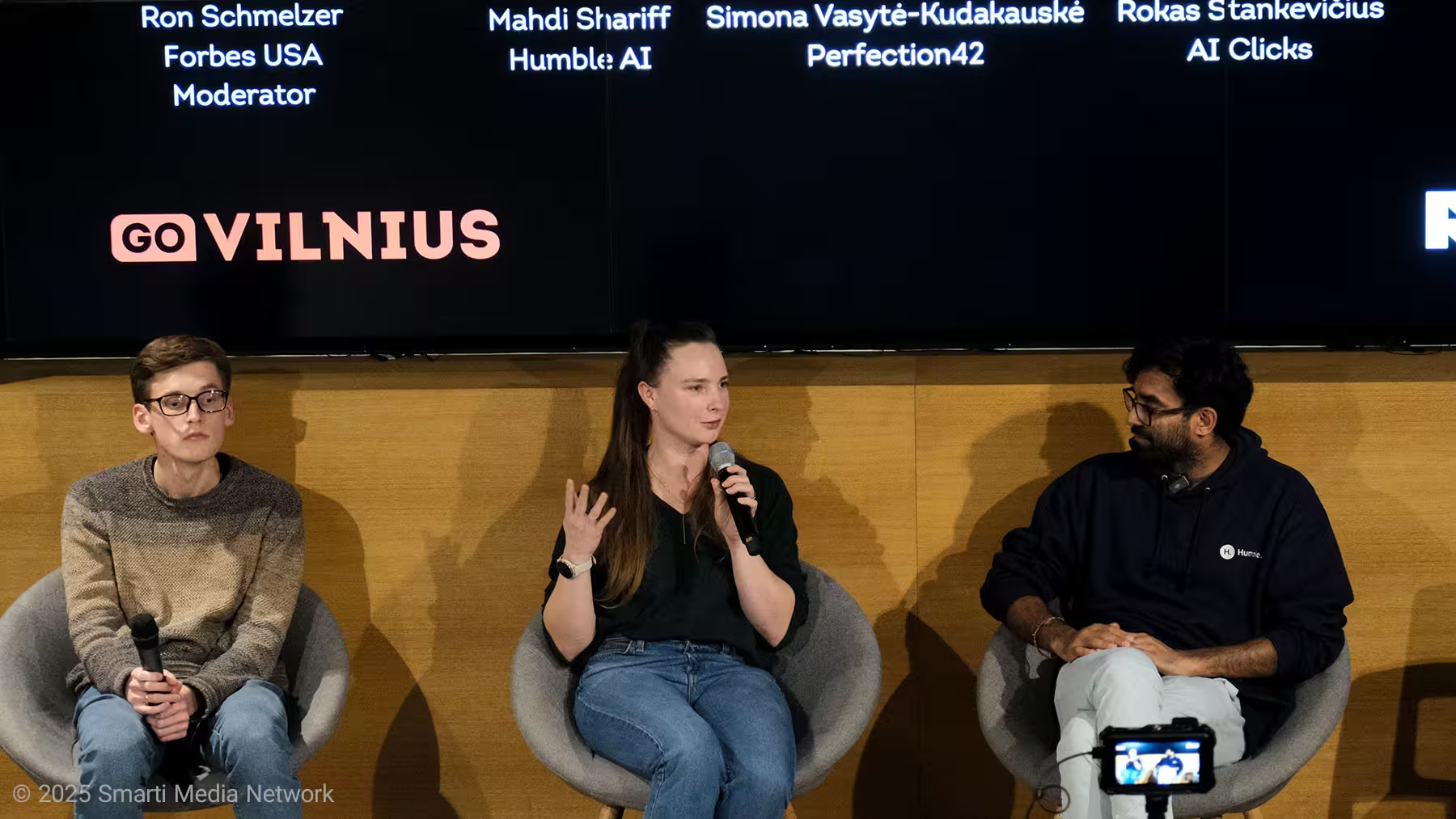
Perfection42 already serves over 20 customers and aims to produce 600,000 images for the furniture sector in the near future. For them, strategic focus and deep understanding of a single industry outweigh the temptation to build generalized tools.
2.3. Rokas Stankevičius: Optimizing Brands for AI-Driven Discovery
Stankevičius explained that AI Clicks emerged from his years of work helping companies integrate AI into real workflows. Initially focused on education and applied consulting, AI Clicks now builds tools that help brands optimize their presence in AI-driven search interfaces such as ChatGPT, Perplexity, and similar large-language-model ecosystems.
He described this as the natural evolution of SEO. Instead of optimizing for Google queries, brands now must ensure they appear in conversational responses generated by AI assistants. His platform aims to serve that emerging need.
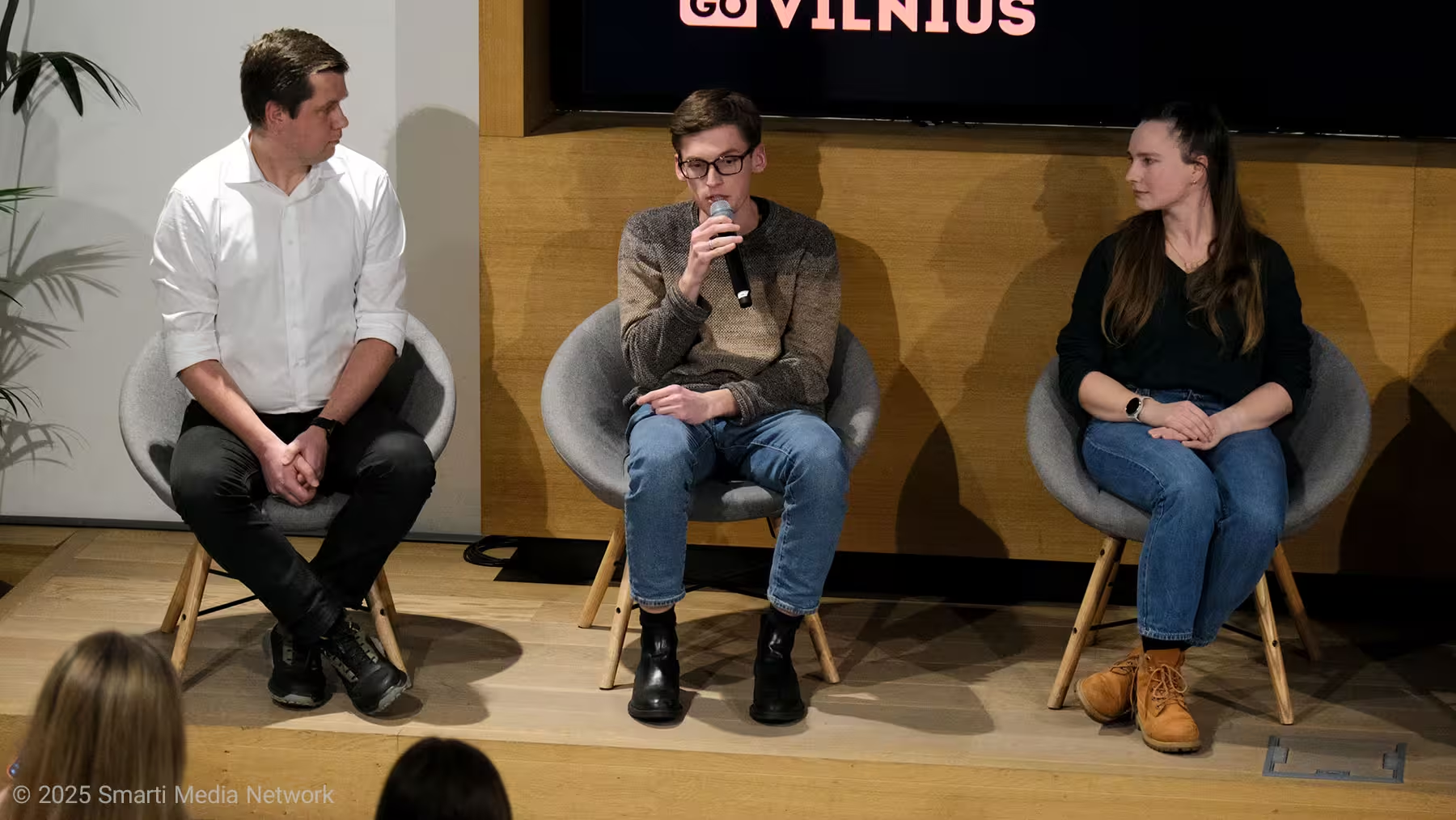
On the subject of hype, Stankevičius argued that AI differs from previous boom-and-bust cycles like blockchain. Companies can already extract workable, practical value from AI without waiting for distant maturity milestones. Nevertheless, he acknowledged that speculation and unrealistic expectations do exist.
2.4. Egidijus Pilypas: Auto-Augmenting a Workforce Through AI
Pilypas approached the topic from a different angle. At Exacaster, his primary mission for the past six months has been to automate his own role as Director of Global Marketing. He estimates he is already “95 percent” automated, with AI tools fulfilling core tasks he once handled manually.
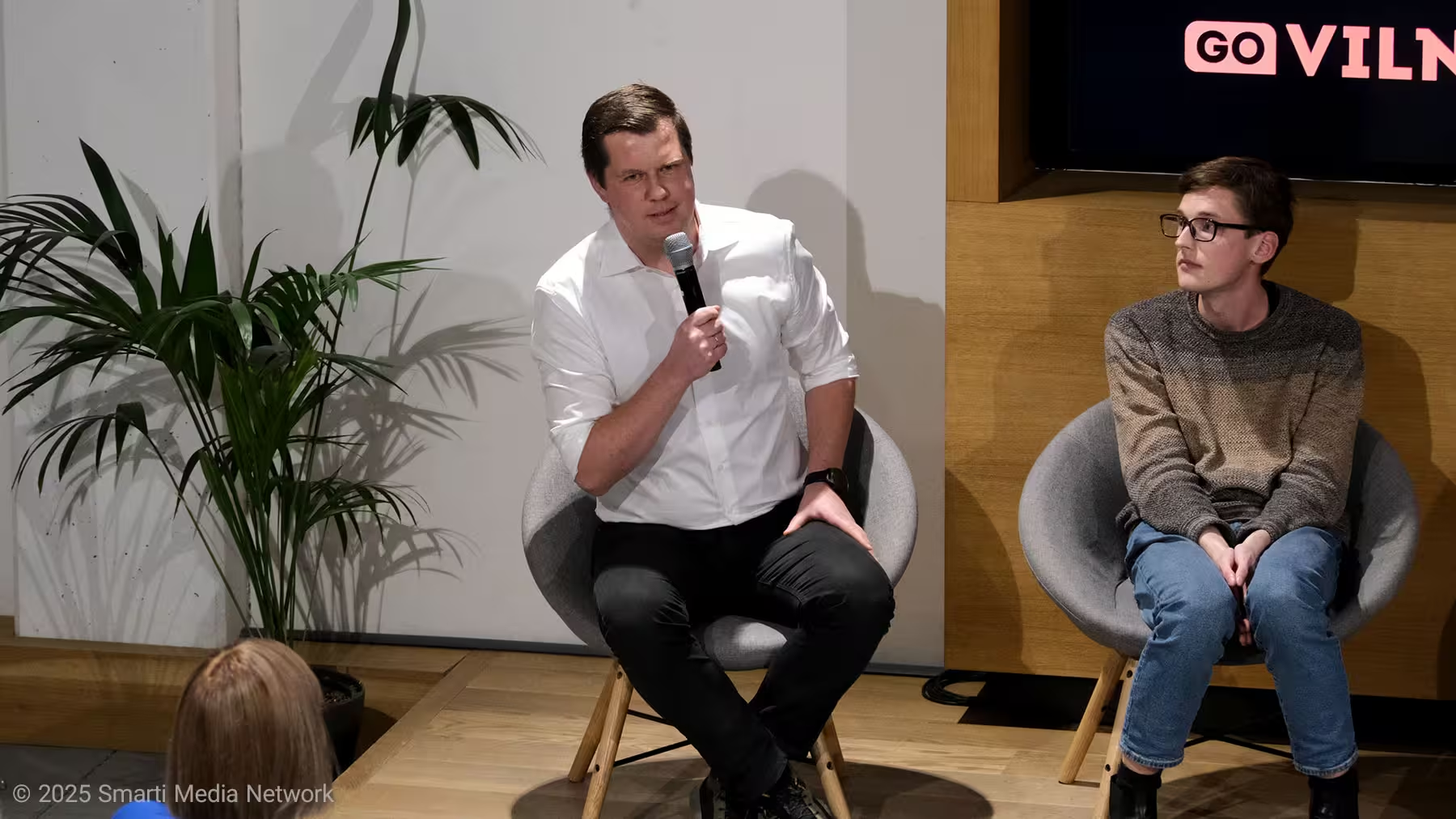
The long-term goal for Exacaster is to create AI augmentation layers for every function across their 100-person company. For Pilypas, the AI boom resembles a “Big Bang,” unleashing both chaos and opportunity. For large corporations investing trillions, the risk is high. But for small, nimble companies, periods of disruption create rare windows to leap ahead.
3. Are We in an AI Bubble or an AI Big Bang?
As the panelists finished their introductions, Schmelzer acknowledged that the term “Big Bang” captures both the opportunity and danger of the current moment. He compared today’s landscape to the early years of the Internet during the 1990s. The dot-com crash did destroy many companies, but it also set the stage for the rise of Google, Facebook, and the broader digital ecosystem that emerged afterward.
He noted that innovation today is happening at a pace far faster than journalists can cover. With new models like Gemini 3 and OpenAI’s GPT-5.1 launching within months of each other, the challenge is no longer building new products, but retaining attention long enough for customers to understand them.
This segued into the next major question:
How do founders plan when the ground beneath them shifts every few weeks?
4. The Planning Problem: Building in a Market That Reinvents Itself
Schmelzer quoted the Head of Growth at the fast-growing AI startup Lovable, who described product-market fit as a moving target that must be rediscovered daily. The company no longer plans more than six months ahead.

He asked the panelists how they handle iteration, planning, and customer readiness in such a volatile environment.
4.1. Mahdi Shariff: The Human is the Limiting Factor
Shariff emphasized that the biggest challenge is not technological acceleration but human overwhelm. The rapid proliferation of AI tools creates noise, uncertainty, and anxiety for individuals and organizations. He argued that society risks losing stability if innovation outpaces the population’s capacity to adapt.
Instead of focusing solely on technology, Shariff believes companies must prioritize upskilling, human-centered design, and inclusive access. Without hope and agency, people may disengage or react negatively to automation.
His perspective reframed the discussion: planning for AI should begin with planning for people.
4.2. Simona Vasytė-Kudakauskė: Focus Beats Speed
For Vasytė-Kudakauskė, the way to navigate rapid market change is to narrow the scope of what you build. Perfection42 could have chased dozens of use cases, but instead chose one domain with deep industrial demand. By embedding in that vertical—attending industry events, forming partnerships, building tailored tools—they insulated themselves from the chaos of general AI trends.
If a company becomes best-in-class in a niche, she argued, it can scale more predictably than companies trying to serve everyone.
4.3. Rokas Stankevičius: Practical Use Cases Matter Most
Stankevičius reiterated that companies must avoid abstraction. The most successful AI solutions are those tied directly to practical workflow improvements. By working closely with customers over the past three years, he observed that organizations value tools that solve clear, immediate problems, not products chasing headlines.
For AI Clicks, this meant pivoting toward AI search optimization, a problem space that did not exist two years ago but now grows rapidly as more users query LLMs instead of Google.
4.4. Egidijus Pilypas: Automate First, Redefine Later
Pilypas described a radical but increasingly common strategy: redesign the company from within. Instead of reacting to external market volatility, Exacaster began by automating internal roles. Once core workflows are AI-augmented, the company becomes flexible by design and can respond to outside change more fluidly.
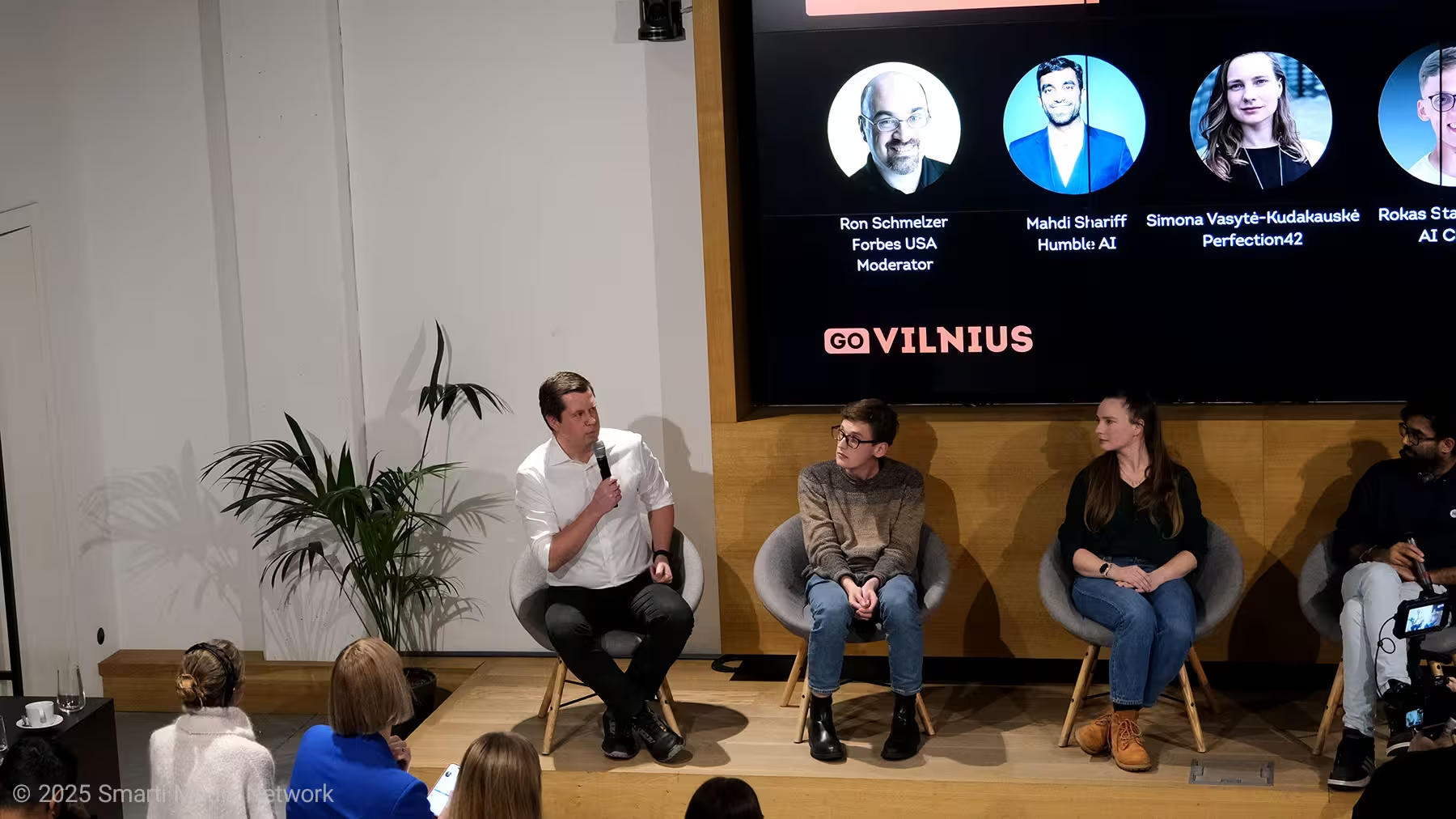
He argued that small companies should not fear the speed of transformation. Rapid disruption redistributes opportunity. The winners will be the organizations that prepare their internal capabilities now, before mass consolidation arrives.
5. Market Dynamics: Noise, Saturation, and the War for Attention
Schmelzer returned to the broader landscape and emphasized the near-impossible signal-to-noise ratio affecting both startups and customers. New AI announcements are released every day. This heightened pace makes it difficult for founders to gain visibility or for buyers to understand what solutions truly matter.
He compared the situation to the early Internet. Netscape, Yahoo, and AOL dominated the market during the dot-com boom, yet none became the long-term winners of the industry. Instead, the most durable companies emerged after the crash, leveraging the ecosystem left behind.
The implication was clear:
Founders who remain consistent, focused, and agile may outlast today’s inflated expectations.
6. The Human Factor: Anxiety, Opportunity, and the Psychological Layer of AI Adoption
A recurring theme emerged across several answers: people are overwhelmed.
Shariff’s emphasis on the psychological impact of AI resonated with the audience. He argued that any technological revolution carries emotional consequences. When society feels left behind, the legitimacy of innovation erodes.
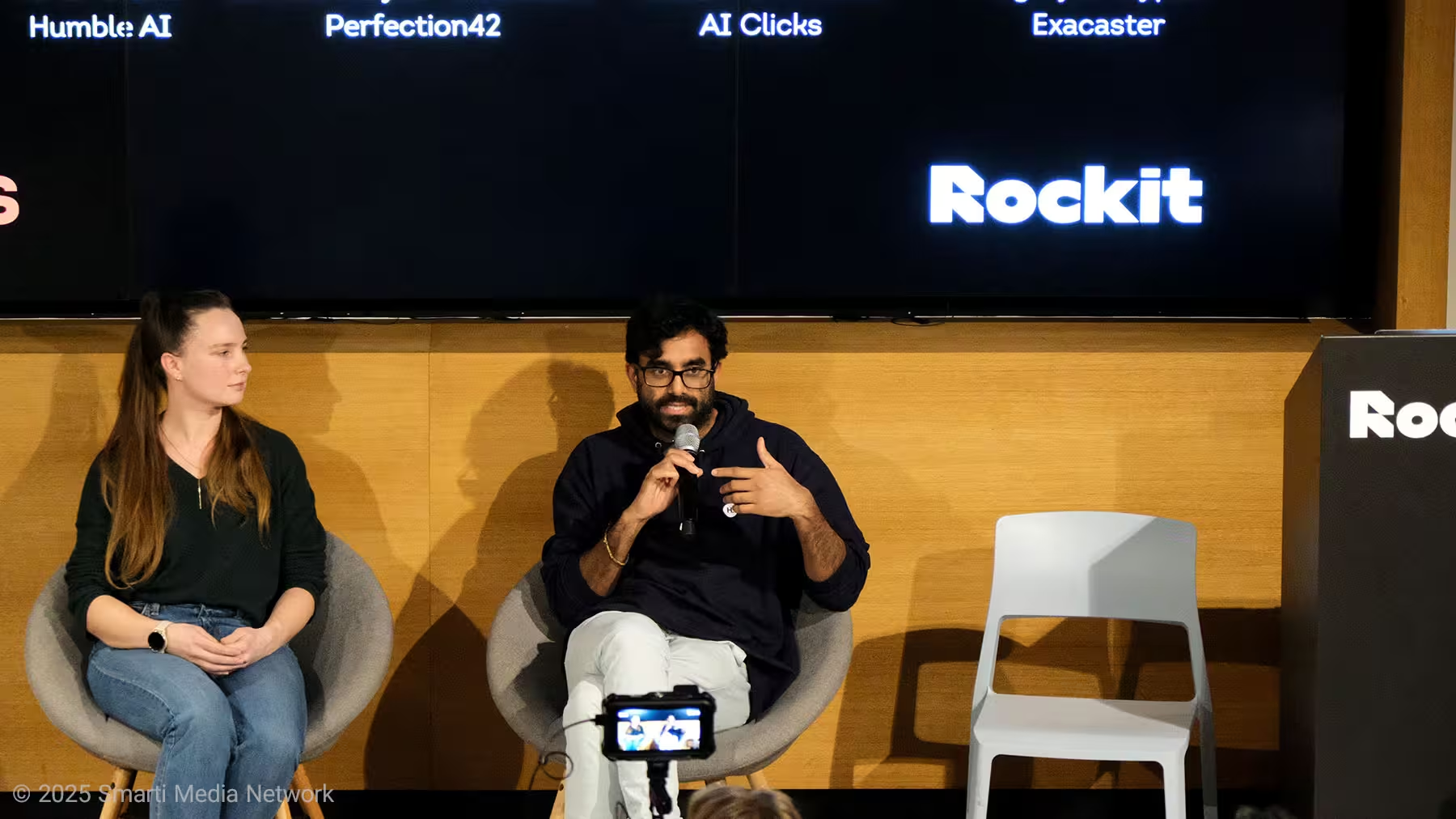
Pilypas echoed this indirectly. By automating his own position, he demonstrated both the inevitability of change and the opportunity it presents. Still, such a transformation must be carefully communicated inside organizations to avoid fear and resistance.
This human-centered thread added depth to a discussion often dominated by technical and economic frameworks.
7. Verticalization, Specialization, and the End of “General AI Startups”
One of the strongest insights from the discussion, reflected particularly in Vasytė-Kudakauskė’s remarks, was the growing importance of vertical specialization. With thousands of AI startups emerging globally, generic solutions become indistinguishable from one another. Investors and customers increasingly seek focused tools that solve domain-specific needs.
Perfection42 serves as a model for this trend. Instead of building a general image generation system like Midjourney, the company optimized for the production workflows of furniture retailers and manufacturers.

This allowed them to outperform larger competitors not by having more funding but by understanding the needs of one industry better than anyone else.
A similar logic applies to AI Clicks, which targets the emerging field of “AI SEO,” and Exacaster’s company-wide internal automation system.
The panel suggested that the next wave of AI winners may be specialized, not generalist.
8. Strategic Planning in a World With No Long-Term Forecast
One of the heavier topics was the impossibility of long-term planning. Schmelzer noted that even the fastest-growing AI startups now refuse to plan more than six months ahead because the market redefines itself too quickly.
How should founders build strategy in this environment?
8.1. Short Planning Cycles
The consensus was that companies must adopt iterative, weekly or monthly planning cycles rather than annual roadmaps.
8.2. Constant Alignment With Customers
Customers themselves are overwhelmed and often unsure how to adopt AI. Startups should guide them through incremental improvements rather than selling long-term visions.
8.3. Internal AI Adoption First
Building AI-augmented internal teams helps companies stay adaptable.
8.4. Focused, Narrow Markets
Specialization reduces exposure to macro-volatility.
These strategies collectively form a new blueprint for surviving early-stage AI chaos.
9. The Broader Implications: A New Industrial Shift
Toward the final part of the discussion, the tone widened to reflect on the historic nature of the current AI wave. Comparisons to previous technological revolutions—industrialization, electrification, the Internet—were implicit throughout the panel.
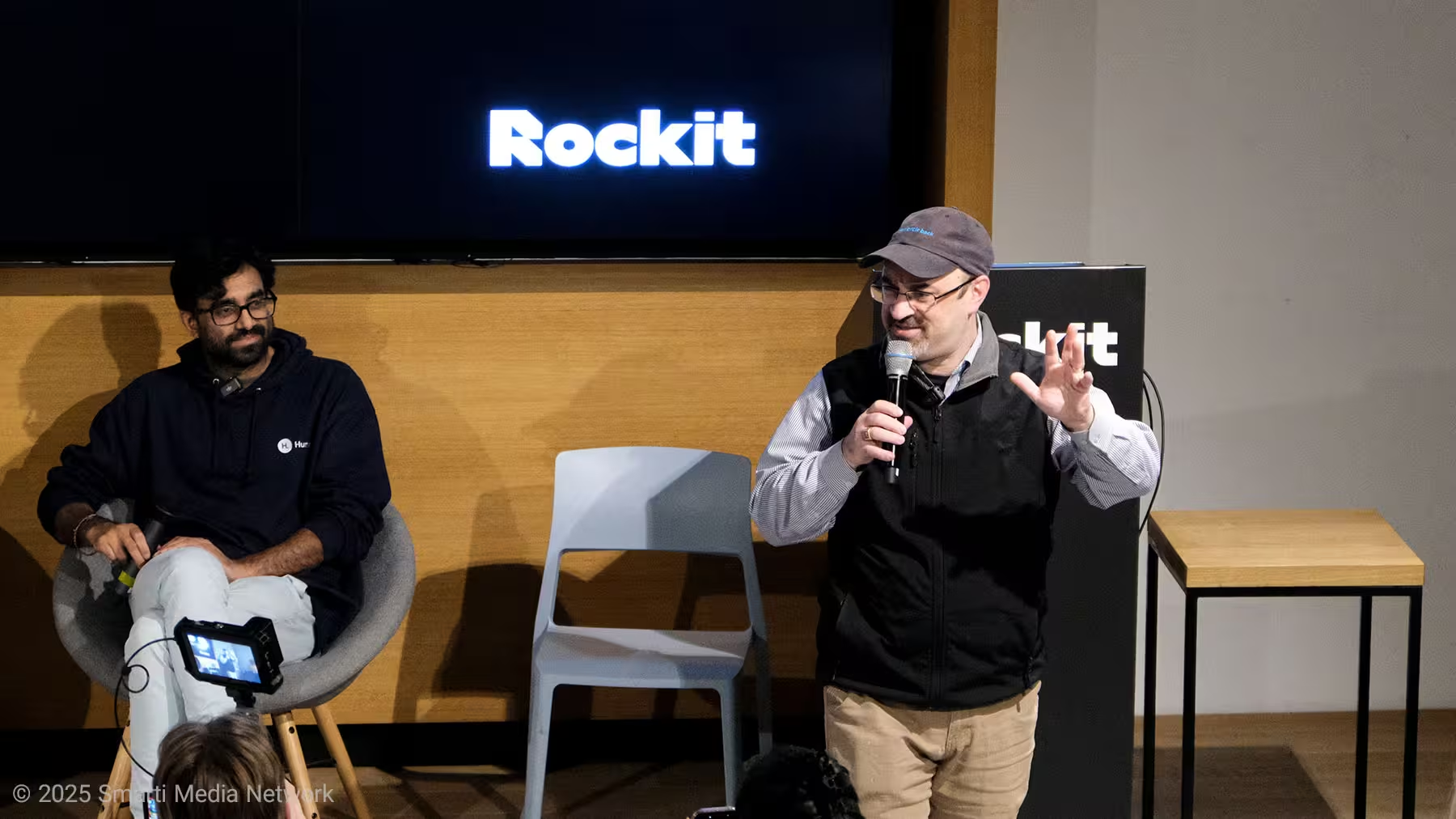
The speakers collectively portrayed AI not just as another platform shift but as a structural realignment of labor, creativity, productivity, and competitive advantage.
Pilypas’s description of the “AI Big Bang” captured this sense of epochal transformation. And Shariff’s reminder of “the human layer” grounded the discussion in social responsibility.
10. Conclusion: Is Your Startup Doomed Without AI?
The panel never answered the question explicitly, but the subtext was clear.
A startup is not doomed simply because it does or does not use AI. Instead, doom comes from misunderstanding the landscape:
Using AI without strategy is pointless.
Ignoring AI entirely is equally risky.
The winners will be founders who understand:
• where AI is genuinely creating value
• how to integrate it into human-centered workflows
• how to plan in short, iterative cycles
• how to specialize in specific industries
• how to automate internally before scaling externally
• how to stay flexible amid chaotic market shifts
In this complex environment, AI is not a guarantee of success, but the absence of AI literacy is increasingly a guarantee of vulnerability.
Going Global 5 panel served as a reminder that the global AI transformation is still in early stages. Whether it becomes a bubble or a Big Bang, the startups that survive will be those who balance speed with focus, innovation with responsibility, and ambition with realism.
Comments
mechbyte
wow, that panel gave me chills. the speed of change is scary but kinda thrilling too. humans gotta catch up, fast.

.webp)
Leave a Comment